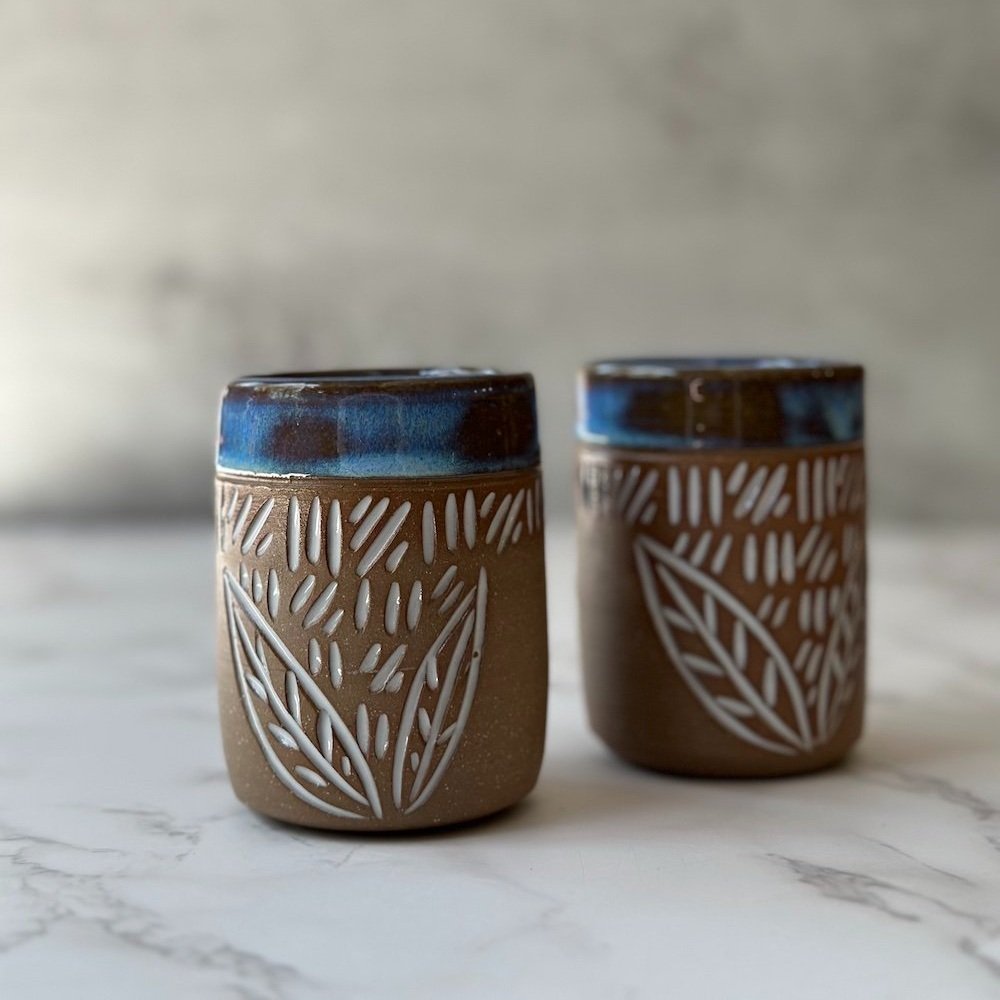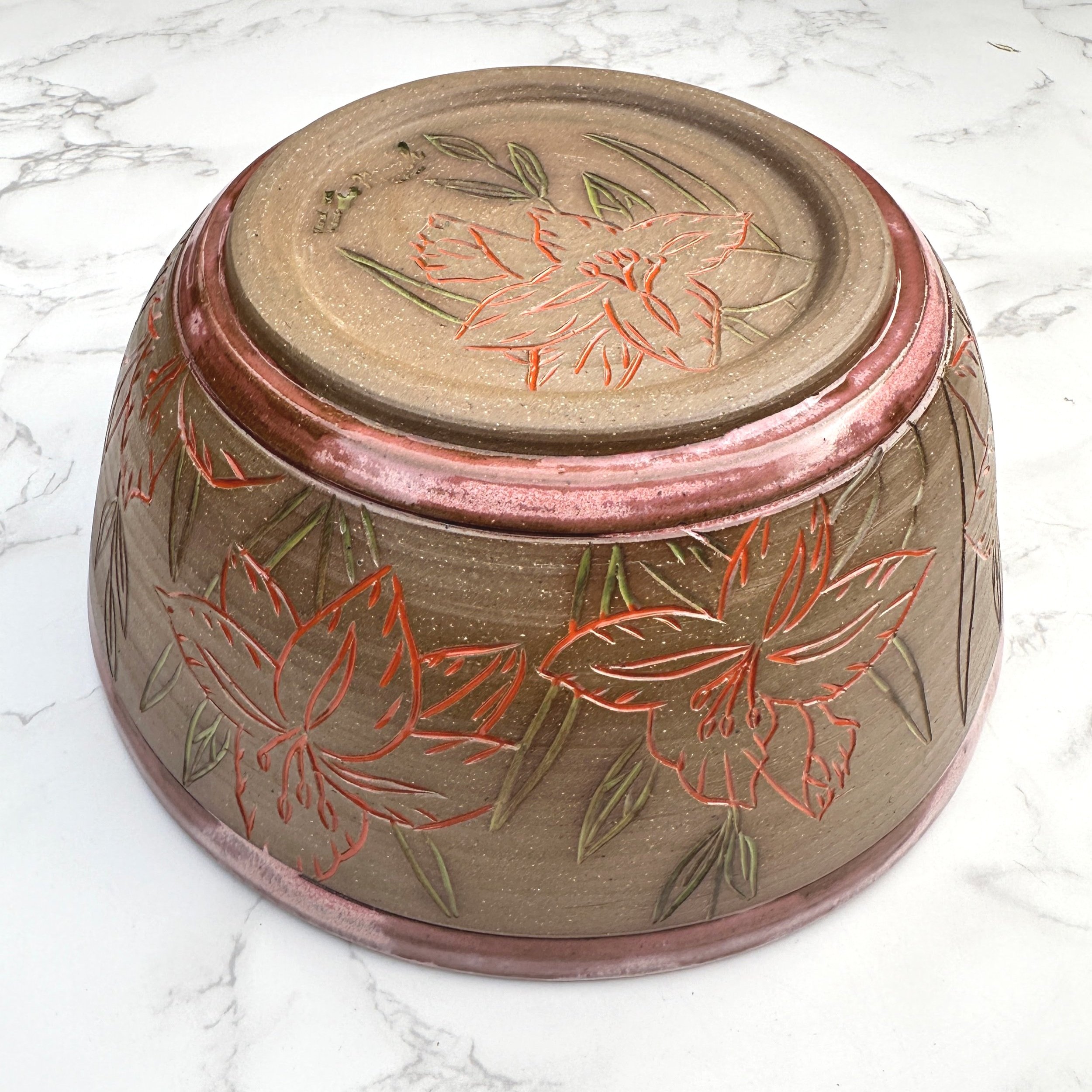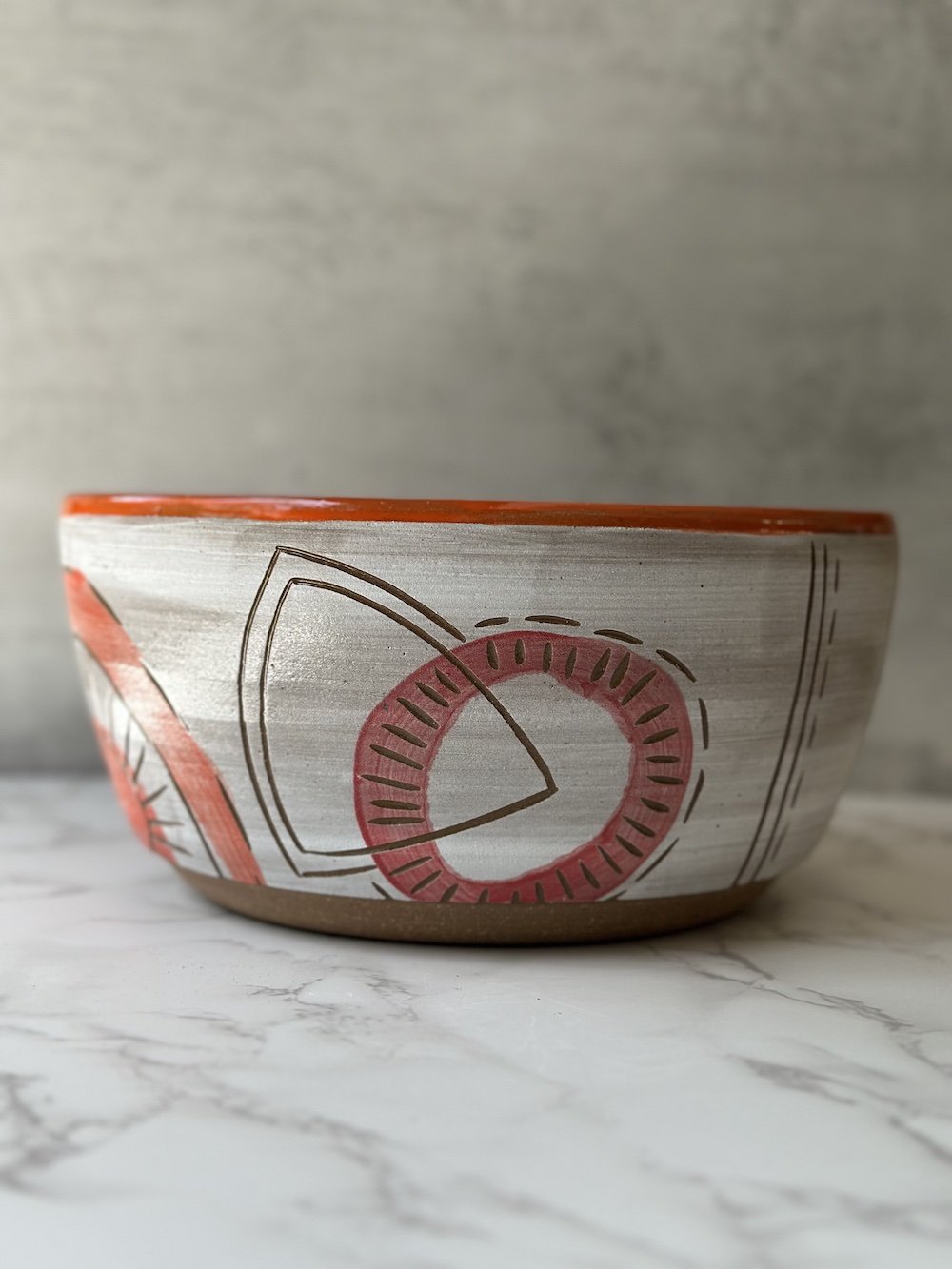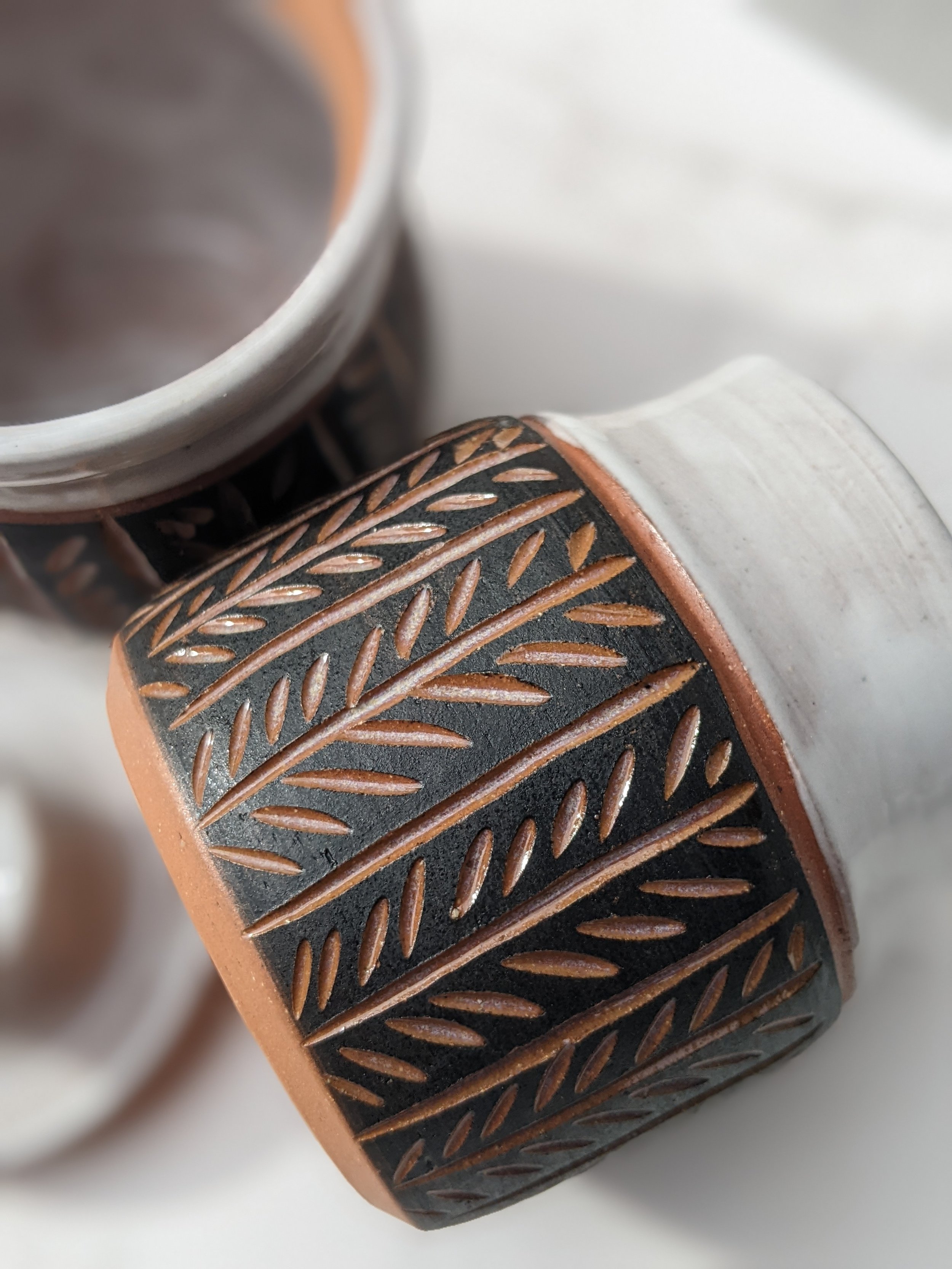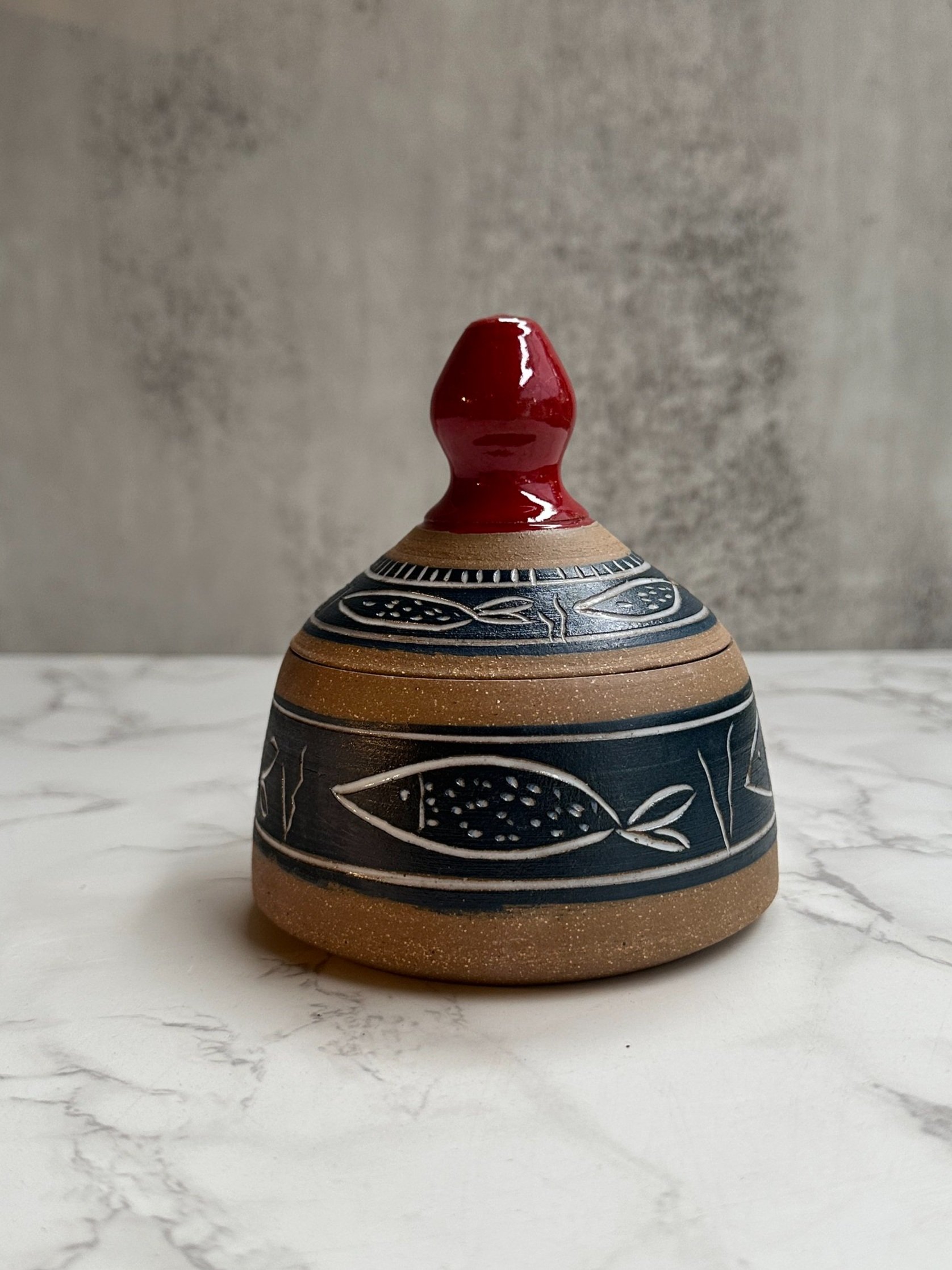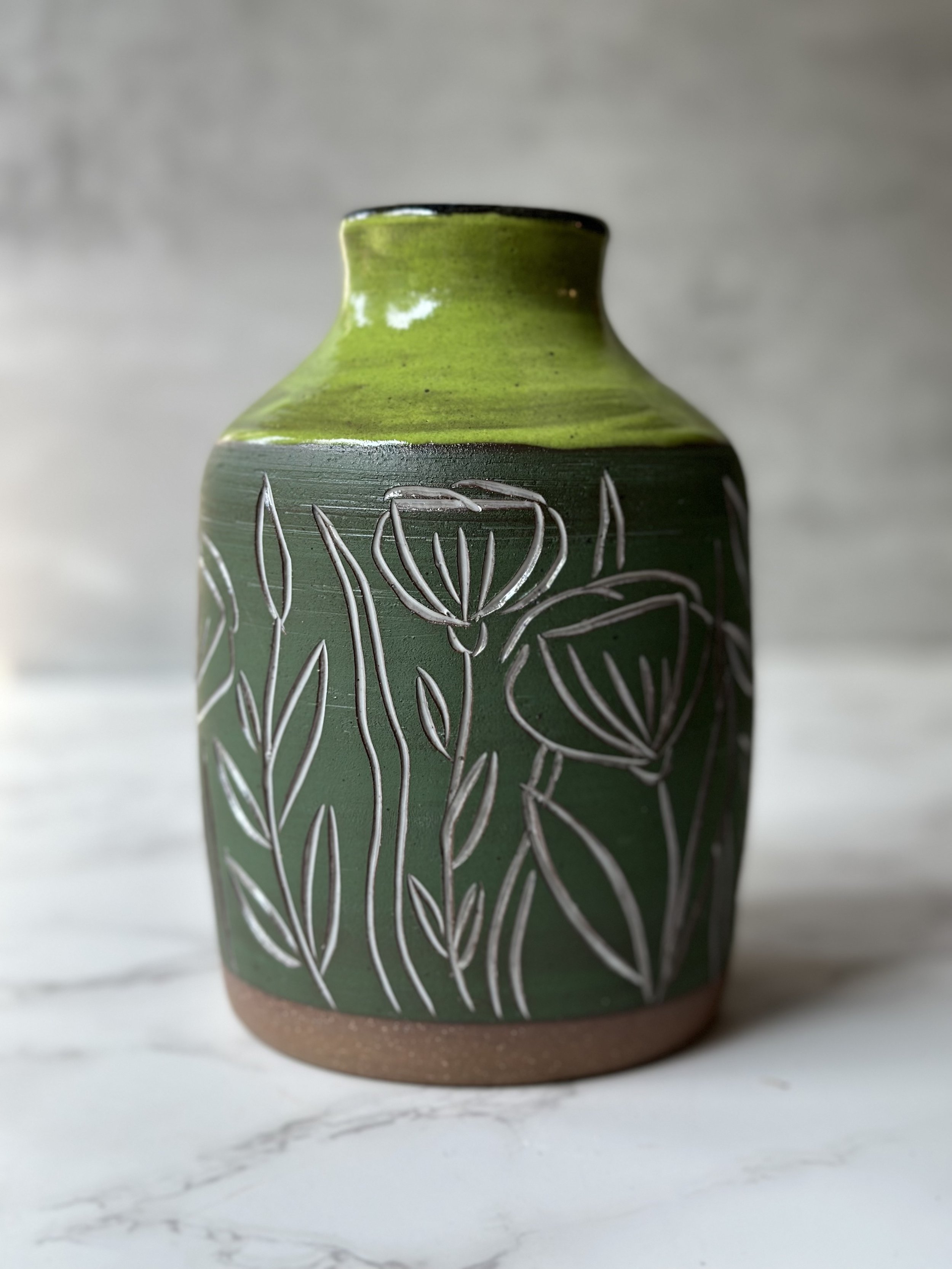Pottery Trimming & Carving Tools: A Comparative Analysis - Which one to buy?
If you are interested in trimming/turning and carving your hand-made ceramic pots, you will need some tools.
There are MANY options out there. So, which tools should you invest in?
I’m going to take some time explaining my recommendations, but if you want to skip ahead click here for the TL/DR!
Interested in other tool recommendations? Check out this post with various pottery toolkit recommendations. Want to know why I care about carving so much? Read this post!
First, some measures for what makes a good trimming & carving tool:
Sharpness: How sharp is the blade?
Durability: How long will the tool last?
Efficacy of use: How easy, comfortable, effortless is this tool to use?
The Tools I Use
Quick note that what tool you use is a personalized choice — what works for one person may not be the preferred option for someone else! My views are based on my experience. Want proof that I’ve tried a lot? Here’s a picture of just a handful of my trimming & carving tools.
Budget Carving Pick: Xiem Studio Mini Ribbon Sculpting Tools
If you are looking to do some detailed carving on a budget, this Xiem Studio Mini Ribbon Sculpting Tools kit valued at $23.95 on Blick.com comes with nine differently shaped detailing tools in total.
The Xiem small ribbon sculpting tools are good for intricate carving, detailed trimming (like adding a foot to the bottom of a pot), and texturing. The brightly colored handles are made of aluminum and have soft rubber grips. The thin loops are sharp and made of durable tempered steel, though they may bend and misshapen if used on too-stiff unfired clay.
For an even more budget option, these standard aluminum mini ribbon tools are a common pick for ceramic studios, beginner students, and kid potters. On Blick.com, they come in a pack of 6 different loops for $12.54.
Because the aluminum loops are thin (not necessarily the sharpest), they do well enough with trimming not too stiff clay, but they aren’t the best for sgraffito and intricate decorative carving because the aluminum warps if too much pressure is applied on just past leather hard clay. They also have a tendency to stick when the clay is too soft for carving, so you really need to get the timing just right! These tools can also create rougher edges when they cut into clay.
Classic Trimming Pick: Standard Kemper Ribbon Tool
The Kemper Ribbon Tool is your standard classic trimming tool. It’s made with a heavy stainless steel ribbon with sharpened edges. I’ve been using these tools to trim my pots since I started wheel-throwing in 2006, and they are quite sturdy. Over time, the edges of the steel dulls, so its capabilities dwindle unless the blades are sharpened again (which I’ve never done to be honest).
These Kemper Ribbon Tools are better for trimming than carving, in my opinion. The loops are large, which is good for taking clay off the bottom of a pot or for hollowing out sculptures, but they are too large for detailed work. Since they dull, they require more pressure than a sharp blade would. Once clay is a little past leather hard, it’s pretty tough to do any decorative carving.
Kemper does have a double ended sgraffito tool marketed for detailed carving, and while it’s sturdy, I find the loops too rounded and not sharp enough for clean and effortless carving, especially in leather hard clay.
If you are trimming large surfaces (like large bowls), this Xiem teardrop trimming tool or these Kemper Ceramic Loop Tools do a good job. While these larger loop tools are also good for carving out large chunks of clay (like if you are making a kurinuki piece, which is when a potter starts with a solid block of clay and hollows it out to create a piece), it’s too big a loop for detailed carving.
If you want to go classic and affordable, go Kemper. You can find them here on Blick.com for $5.49. Beware of cheaper options like these on Amazon as they are not durable. They may look similar and the lower price might be attractive, but they are not worth it. After some time, if you are good about washing your tools, the glue that keeps the metal loops affixed to the wood handle just pops off.
Want to try an alternative to loop tools for trimming? I highly recommend this Mudtools Trim Tools Double Ended Do All Tool. While on the pricier side at $25 on Blick.com (It’s $27.45 on Amazon), it’s made of one piece of carbon steel, so it’s extra durable. It’s also sharp, and given the shape of the blades, it’s easy enough to resharpen if it dulls. I love this tool for turning/trimming large pieces on the wheel. Tip: When trimming on the wheel, you do have to learn how to grip the Mudtools Trim Tools Double Ended Do All Tool properly and make sure your clay isn’t too wet or too dry so you don’t get chattering (when a trimming tool skips over the surface of a pot and leaves ripples).
Top Pick: Diamond Core Tools
In my classroom, I call Diamond Core Tools the Ferrari of trimming and carving tools. They are pricier ($33-$48 per tool), but you get what you pay for: excellent engineering.
These tools are by far the best in terms of sharpness, ergonomic comfort, and efficacy of use. You can find all kinds of loop shapes to fulfill your trimming and carving needs — from intricate carving designs to beautifully trimmed bottoms.
For intricate carvings, I recommend the FP1 Fine Point U Tip 1 mm X 1 mm Carving Tool. If you want to build that perfect first set of carving and sgraffito tools, go for the Diamond Core Tools 3-Piece Fine Point Set 1 (FP1, FP3, FP5).
For trimming, I recommend the T1 Half Dome Pottery Trimming Tool w/ Paddle Handle. Of all the Diamond Core trimming tool options, this one’s the winner because it has a stainless steel sharp blade and has a round side and a straight corner. The hardwood handle tip is also paddle-shaped which is good for smoothing and blending clay.
Sharpness really makes a difference in creating clean lines and smooth trimming without needing to apply too much pressure.
While the hilt of your Diamond Core tool will stand the test of time, because the Diamond Core blades are sharp, the stainless steel is thinner, so the blades will wear to a breaking point (snap in half) after repeated use, especially if you happen to work with a tad too stiff leather hard clay (hey — I know that timing trimming and carving can be finicky with pottery!).
Because the blades are thin and sharp, I would not recommend Diamond Core Tools for initially hollowing out clay for a kurinuki project, but they are great for the final detailed carving and finessing step.
Handle with care note: Be kind to your Diamond Core Tools blades. If you pinch them or work with too hard clay, you can misshape the loops, which will alter the shape of your cuts.
I have a standard Kemper wire-loop tool from 2006 that isn’t sharp but still whole and still does the trick for trimming a pot, BUT I’ll take my Diamond Core tools over a standard loop tool any day. Diamond Core Tools come with replacement blades, and you can easily replace the blades without buying a new tool each time.
If you are new to Diamond Core Tools and you order directly through their website, you can use code WELCOME25 to get 25% off your first order (excludes the Cink)!
TL/DR - Just Give Me a Shopping List!
If you are serious about your pottery journey, here are my top recommended decorating and trimming tools:
Decorative Carving Starter Kit: Diamond Core Tools 3-Piece Fine Point Set 1 (FP1, FP3, FP5). The FP1 is excellent for fine details. The FP3 and FP5 are great for carving out backgrounds for sgraffito and for carving thicker bands. Hint: Diamond Core Tools will sometimes have promos like buy one get one free! If you are new to Diamond Core Tools you can use code WELCOME25 to get 25% off your first order (excludes the Cink)!
Trimming: Mudtools Trim Tools Double Ended Do All Tool or Diamond Core Tools T1 Half Dome Pottery Trimming Tool w/ Paddle Handle.
Note: This blog is not sponsored. However, as a Blick.com and Amazon associate, I do earn from qualifying purchases. As an artist, every bit of support counts!



